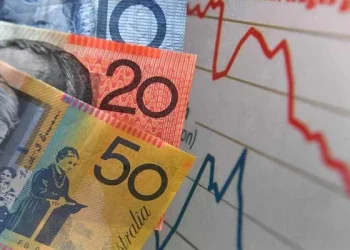After hitting fresh record highs yesterday, the DAX and CAC 40 ended the day lower as caution set in ahead of the final central bank meetings of 2023 today and tomorrow, starting with the Federal Reserve later this evening.
US markets, on the other hand, continued their recent bullish bias, with both the Dow and S&P500 closing at fresh 2023 highs after US inflation slowed slightly to 3.1%, even as bond yields edged higher.
Despite this upbeat US close, European markets are set to open mixed.
US CPI inflation for November came in slightly firmer than expected on a core basis, while UK wage data for October slowed slightly more than expected to 7.3% from 7.8% in September, leaving markets in limbo over the timing of interest rate cuts next year.
Today’s monthly UK GDP figures, as well as manufacturing and industrial production figures, are likely to add to the challenges facing the Bank of England as it tries to squeeze inflation out of a UK economy that is struggling with still elevated inflation and a squeezed consumer.
After the UK narrowly avoided a contraction in the third quarter, some of the more recent economic data as we head into the fourth quarter has shown modest improvement, raising the prospect that the UK economy could avoid a recession at the end of this year.
Given that a year ago both the IMF and the Bank of England were predicting a long recession, this is no small feat. That’s not to say that everything is fine and dandy, it’s not, but sometimes it’s too easy to be pessimistic.
In September, the UK economy managed to expand by a modest 0.2%, with consumers feeling the pinch of higher interest rates throughout the quarter, as well as various public sector strikes.
Fortunately, interest rates have come down from their eye-watering summer highs, easing some of the pressure on hard-pressed consumers, although mortgage arrears have risen, while recent PMI figures offer some hope of optimism.
As Q3 gets underway, today’s monthly October GDP will provide a glimpse into Q4, although various weather-related events may also impact the numbers, with a contraction of -0.1% expected, with similar weakness in industrial and manufacturing production.
When the Federal Reserve left interest rates unchanged for the second straight meeting in November, there was still a distinct possibility that the final meeting of 2023 would offer the possibility of one more rate hike to end the year in line with Fed policymakers’ dot plot forecasts of 5.6%.
In the weeks since then, the prospect of that happening has diminished to near zero, despite Fed Chairman Jay Powell’s insistence earlier this month that the prospect of further hikes remains on the table and that rate cuts could well follow in the coming months. While we know that Fed policymakers are targeting a fed funds rate of 5.1% by the end of next year, markets are increasingly of the opinion that we could see more than that, with the first expected in December.
At his November press conference, Powell insisted that no decisions had been made about whether more rate hikes were coming. He went on to say that while financial conditions had tightened, policymakers weren’t confident that policy was restrictive enough, even though they had come a long way. While this was a view repeated just before the blackout period, other policymakers have already shifted their stance, with a hawkish Fed board member, Christopher Waller, saying that monetary policy was currently well positioned to slow the economy and bring inflation back to target. He went on to say that if disinflation starts to become a concern, then rates could be cut in response, a sign that the ground is now shifting and that rates have peaked.
The recent bond market reaction may be a concern for some Fed members if the decline in yields causes financial conditions to loosen just enough to trigger a rebound in inflation. This doesn’t mean we’ll see another rate hike, no change is expected, but it may cause the FOMC to look at their dot plots for next year and be wary of changing them in any way that could be seen as dovish.
EUR/USD – Yesterday’s rally ran out of steam at the 200-day SMA at 1.0830 before pulling back. We need to break above 1.0830 to signal a move higher. Support is just above the 50-day SMA at 1.0720.
GBP/USD – Finding support just above the 200-day SMA at 1.2500. A break below the 200-day SMA and the 1.2460 would signal a broader test of the 1.2350 area. Resistance currently in the 1.2620 area.
EUR/GBP – Popped above the 0.8600 area yesterday before pulling back with support still at the lows at 0.8545/50. While below the 0.8615/20 area, the risk remains for a move towards the September lows at 0.8520 and possibly further towards the August lows at 0.8490.
USD/JPY – After last week’s test of the 200-day SMA at 142.50, we’ve seen a solid bounce with the rally running out of steam at 146.60 before falling back to support at 144.70. While above 144.70 we could see an extension to 148.00.
The FTSE100 is expected to open 9 points higher at 7,551.
DAX is expected to open 6 points lower at 16,785.
CAC40 is expected to open 7 points lower at 7,536.

























